Kriebstein - The "most beautiful knight's castle" in Saxony
Dear Readers,
In the heart of Saxony, where the whisper of history echoes through ancient stones, lies Kriebstein Castle. Oh, what stories these walls could tell! Therefore, let us briefly dive into the history of the origin and change of this defiant-looking building through the centuries.

Before the Lords of Beerwalde laid the foundation stone for Kriebstein Castle in the 14th century, their ancestral seat was located on a hill known as the "Waal", which lay in the middle of the village of Beerwalde. Remarkably, remains of this ancestral seat can still be seen today. With the foundation of the castle, Kriebstein became the coveted residence and seat of power of the Beerwalde family, which held dominion over the towns of Waldheim and Hartha around 1400. The earliest known mention of the castle dates back to 1384, when Dietrich von Beerwalde vowed to "build the Krywenstein on which his father had sat". Much of what can be seen of the castle today, such as the residential tower (completed and roofed in 1399), the associated chapel, and the circular wall with its imposing gatehouse, can be traced back to Dietrich's vision of the castle. Only scanty remains of his father's earlier fortress are still preserved. In 1407 Dietrich von Beerwalde was again entrusted with the dominion of Kriebstein. After Dietrich's death in 1408, the manor passed to his widow Elisabeth and later to his daughter Klara as a dowry.
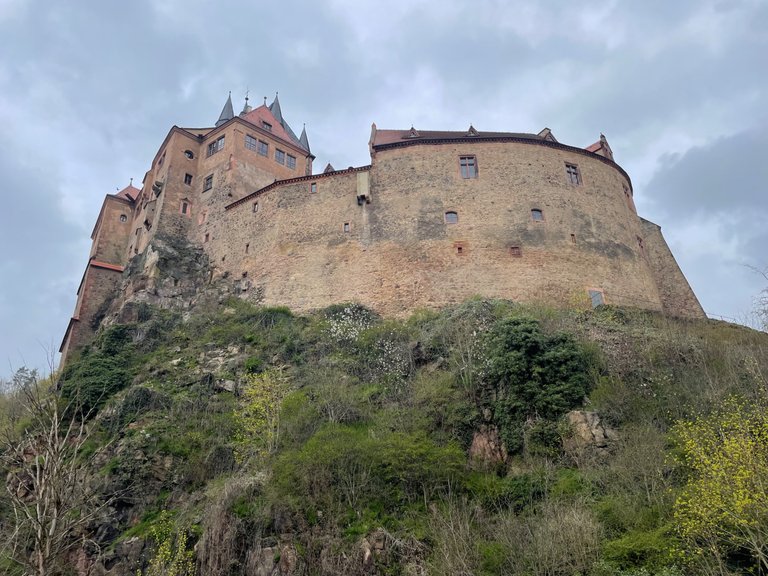
With the acquisition by Hugold III von Schleinitz in 1465, a new chapter in Kriebstein's building history began. As chief marshal of Elector Ernst and Duke Albrecht, Schleinitz commissioned extensive alterations and extensions and entrusted Arnold von Westfalen, the esteemed court architect of Albrechtsburg Castle in Meissen, with the task. The unmistakable craftsmanship of master builder Arnold von Westfalen can be felt throughout the castle. He oversaw the reconstruction and construction of the "New Dance Hall", part of the economy wing, the Fountain Chamber and the "Rear Castle", as well as the construction of the Kitchen House, whose characteristic window shapes bear witness to his work.
These reconstructions gave Kriebstein Castle its present dimensions and preserved its Gothic character, which still enchants visitors today. After the death of Hugold von Schleinitz in 1490, the owners of the castle changed without any major construction work. However, under Georg von Carlowitz (1544-1550), the dominion of Kriebstein reached its peak and included not only the villages but also the towns of Waldheim and Hartha.
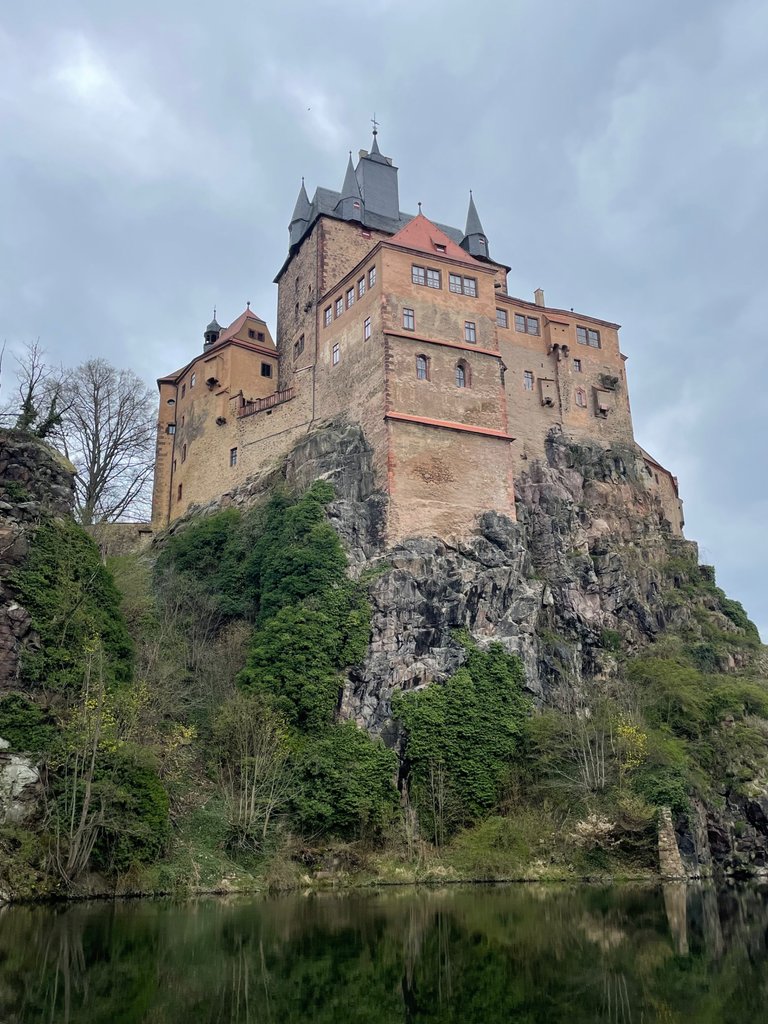
Much later, in the second half of the 17th century, now under the rule of the von Schönberg family, other significant building projects took place. This period saw the raising of the annexes adjacent to the residential tower, the gatehouse and the construction of a central staircase. These changes left an indelible mark on the grand medieval design of the castle. Especially the changes to the kitchen house were considerable. The original half-timbering with its hipped roof was replaced by a massive structure, and the imposing chimney was dismantled along with the fireplace. This renovation work was led by the Royal Saxon Chamberlain and Cavalry Captain Hans von Arnim (1833-1889). Hans was married to Luise Freiin von Berg (1837-1910), the daughter of Edmund Freiherr von Berg, director of the Tharandt Forestry Academy. The von Arnim family hosted distinguished guests from the noble history of Saxony and Brandenburg-Prussia, reflecting their influential role in the region.
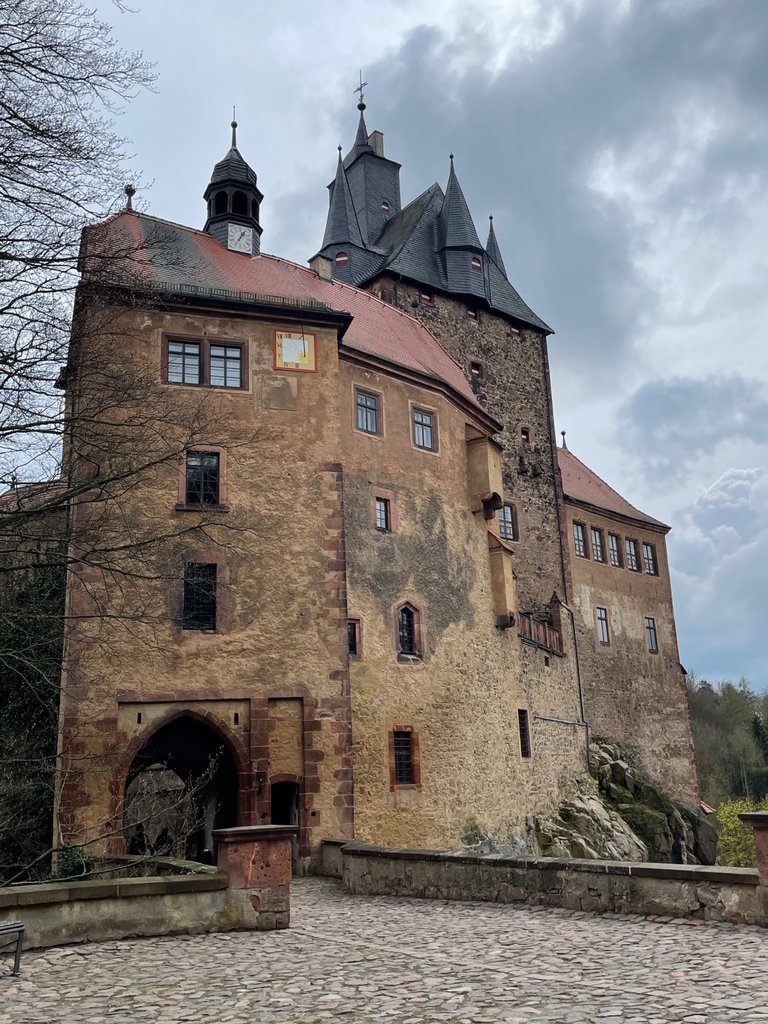
In 1930, parts of Kriebstein Castle were opened to the public for viewing. It is noteworthy that the von Arnim family maintained the castle with great care and carried out extensive restoration work, including the chapel, without state subsidies. Their commitment contributed significantly to Kriebstein's reputation as the "most beautiful knight's castle in Saxony." The last known owners included Erik von Arnim (1873-1945) and, formally, his son Allard von Arnim (1901-1945). In 1925, their property covered 477 hectares and was managed by an inspector and a forester, confirming their ownership of Kriebstein. Allard married Ilse Freiin von der Recke (1908-1997) in 1930, and their four daughters - Anna-Luise, Christine, Dorothee and Katharina - and their son Erik (1945-2002) were born within the walls of the castle.
After the expropriation of the von Arnim family in September 1945, the castle, now state-owned, served various residential and forestry purposes. The museum was reopened on August 6, 1949.
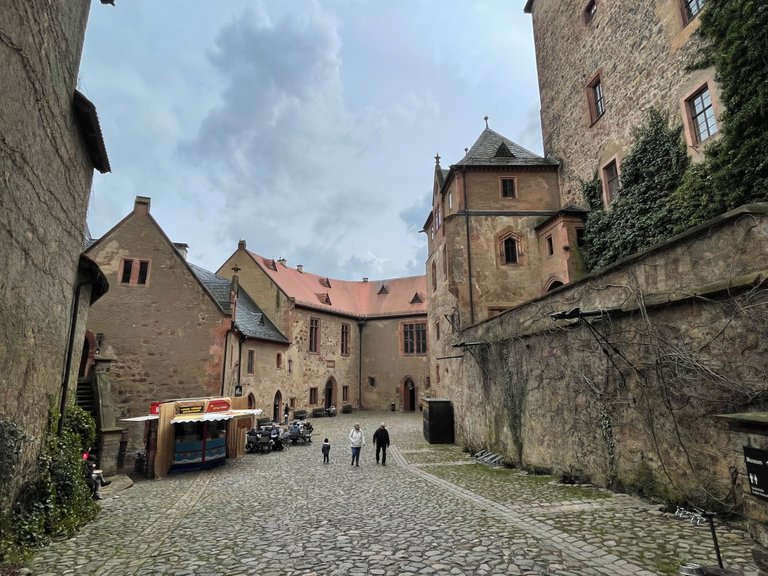
In 1986, a remarkable discovery was made in the residential tower: the Kriebstein treasure. It was one of the possessions rescued by Heinrich Graf von Lehndorff-Steinort from his Steinort Castle in East Prussia before the invasion of the Red Army and also included cultural objects from my Dresden collections that had been taken to Kriebstein after the terrible bombing in February 1945.
Kriebstein Castle and the associated museum have been owned by the Free State of Saxony, which is responsible for the "State Palaces, Castles and Gardens of Saxony", since January 1, 1993. On February 12, 2010, the Free State of Saxony and the Lehndorff heirs agreed on the return of 423 works of art in 2011. Kriebstein Castle remains a popular stop on the Luther Trail and invites all visitors to immerse themselves in the rich history that has unfolded within its walls.
I hope I was able to inspire you with this excursion into the history of the castle for the rich history of Saxony and the beauty of the landscape surrounding me. Visit me and let me inspire you.
Your City-of-Dresden
Kriebstein - Die "schönste Ritterburg Sachsens"
Verehre Leserschaft,
Im Herzen Sachsens, wo das Flüstern der Geschichte durch alte Steine hallt, liegt die Burg Kriebstein. Oh, welche Geschichten könnten diese Mauern erzählen! Darum lassen Sie uns kurz in die Entstehungsgeschichte und den Wandels dieses trutzig anmutenden Gebäudes durch die Jahrhunderte eintauchen.

Bevor die Herren von Beerwalde im 14. Jahrhundert den Grundstein für die Burg Kriebstein legten, befand sich ihr Stammsitz auf einem Hügel, der als "Waal" bekannt war und inmitten des Dorfes Beerwalde lag. Bemerkenswerterweise sind heute noch Reste dieses Stammsitzes zu sehen. Mit der Gründung der Burg wurde Kriebstein zum begehrten Wohn- und Herrschaftssitz der Familie Beerwalde, die um 1400 die Herrschaft über die Städte Waldheim und Hartha innehatte. Die früheste bekannte Erwähnung der Burg stammt aus dem Jahr 1384, als Dietrich von Beerwalde gelobte, "den Krywenstein zu bauen, auf dem sein Vater gesessen hatte". Vieles von dem, was heute von der Burg zu sehen ist, wie der Wohnturm (1399 fertiggestellt und überdacht), die dazugehörige Kapelle und die Ringmauer mit dem imposanten Torhaus, ist auf Dietrichs Vision der Burg zurückzuführen. Von der früheren Festung seines Vaters sind nur noch spärliche Reste erhalten. 1407 wurde Dietrich von Beerwalde erneut mit der Herrschaft Kriebstein betraut. Nach Dietrichs Tod im Jahr 1408 ging das Gut an seine Witwe Elisabeth und später an seine Tochter Klara als Mitgift über.

Mit dem Erwerb durch Hugold III. von Schleinitz im Jahr 1465 begann ein neues Kapitel in der Baugeschichte Kriebsteins. Als Obermarschall von Kurfürst Ernst und Herzog Albrecht gab Schleinitz umfangreiche Um- und Erweiterungsbauten in Auftrag und betraute damit Arnold von Westfalen, den geschätzten Hofbaumeister der Albrechtsburg in Meißen. Die unverwechselbare Handwerkskunst des Meisters Arnold von Westfalen ist in der gesamten Burg zu spüren. Er leitete den Umbau und die Errichtung des "Neuen Tanzsaals", eines Teils des Wirtschaftstraktes, der Brunnenkammer und des "Hinteren Schlosses" sowie den Bau des Küchenhauses, dessen charakteristische Fensterformen von seiner Arbeit zeugen.
Mit diesen Umbauten erhielt die Burg Kriebstein ihre heutigen Ausmaße und bewahrte ihren gotischen Charakter, der noch heute die Besucher verzaubert. Nach dem Tod von Hugold von Schleinitz im Jahr 1490 wechselten die Besitzer der Burg, ohne dass es zu größeren Baumaßnahmen kam. Unter Georg von Carlowitz (1544-1550) erreichte die Herrschaft Kriebstein jedoch ihren Höhepunkt und umfasste neben den Dörfern auch die Städte Waldheim und Hartha.

Sehr viel später, in der zweite Hälfte des 17. Jahrhunderts, nun unter der Herrschaft der Familie von Schönberg, fanden weitere bedeutenden Bauvorhaben statt. In diese Zeit fallen die Erhöhung der an den Wohnturm angrenzenden Anbauten, das Torhaus und der Bau einer zentralen Treppe. Diese Veränderungen haben die großartige mittelalterliche Gestaltung des Schlosses unauslöschlich geprägt. Vor allem die Veränderungen am Küchenhaus waren beträchtlich. Das ursprüngliche Fachwerk mit seinem Walmdach wurde durch eine massive Konstruktion ersetzt, und der imposante Schornstein wurde zusammen mit der Feuerstelle abgebaut. Diese Renovierungsarbeiten wurden vom Königlich Sächsischen Kammerherrn und Kavalleriehauptmann Hans von Arnim (1833-1889) geleitet. Hans war verheiratet mit Luise Freiin von Berg (1837-1910), der Tochter von Edmund Freiherr von Berg, Direktor der Forstakademie Tharandt. Die Familie von Arnim beherbergte angesehene Gäste aus der adligen Geschichte Sachsens und Brandenburg-Preußens, was ihre einflussreiche Rolle in der Region widerspiegelt.

Im Jahr 1930 wurden Teile der Burg Kriebstein für die Öffentlichkeit zur Besichtigung freigegeben. Bemerkenswert ist, dass die Familie von Arnim das Schloss mit großer Sorgfalt instand hielt und umfangreiche Restaurierungsarbeiten, einschließlich der Kapelle, ohne staatliche Zuschüsse durchführte. Ihr Engagement trug wesentlich zu Kriebsteins Ruf als "schönste Ritterburg Sachsens" bei. Zu den letzten bekannten Besitzern gehörten Erik von Arnim (1873-1945) und formell sein Sohn Allard von Arnim (1901-1945). Im Jahr 1925 umfasste ihr Besitz 477 Hektar und wurde von einem Inspektor und einem Förster verwaltet, was ihren Besitz an Kriebstein bestätigt. Allard heiratete 1930 Ilse Freiin von der Recke (1908-1997), und ihre vier Töchter - Anna-Luise, Christine, Dorothee und Katharina - sowie ihr Sohn Erik (1945-2002) wurden in den Mauern der Burg geboren.
Nach der Enteignung der Familie von Arnim im September 1945 diente das Schloss, das sich heute im Staatsbesitz befindet, verschiedenen Wohn- und Forstzwecken. Das Museum wurde am 6. August 1949 wiedereröffnet.

Im Jahr 1986 wurde im Wohnturm eine bemerkenswerte Entdeckung gemacht: der Kriebstein-Schatz. Er gehörte zu den von Heinrich Graf von Lehndorff-Steinort vor dem Einmarsch der Roten Armee aus seinem Schloss Steinort in Ostpreußen geretteten Besitztümern und umfasste auch Kulturgüter aus meinen Dresdner Sammlungen, die nach der furchtbaren Bombardierung im Februar 1945 nach Kriebstein verbracht worden waren.
Die Burg Kriebstein und das dazugehörige Museum befinden sich seit dem 1. Januar 1993 im Besitz des Freistaates Sachsen, der für die "Staatlichen Schlösser, Burgen und Gärten Sachsen" zuständig ist. Am 12. Februar 2010 einigten sich der Freistaat Sachsen und die Lehndorff-Erben auf die Rückgabe von 423 Kunstwerken im Jahr 2011. Die Burg Kriebstein bleibt eine beliebte Station auf dem Lutherweg und lädt alle Besucher ein, in die reiche Geschichte einzutauchen, die sich in ihren Mauern entfaltet hat.
Ich hoffe ich konnte Sie mit diesem Ausflug in die Geschichte der Burg für die reiche Geschichte Sachsen und die Schönheit der mich umgebenden Landschaft begeistern. Besuchen sie mich und lassen sie sich inspirieren.
Ihre City-of-Dresden
References: https://de.wikipedia.org/wiki/Burg_Kriebstein
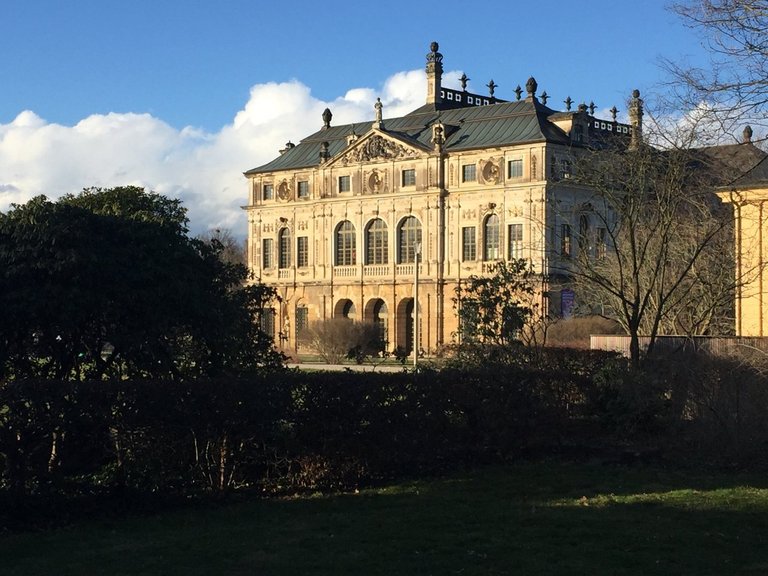 |
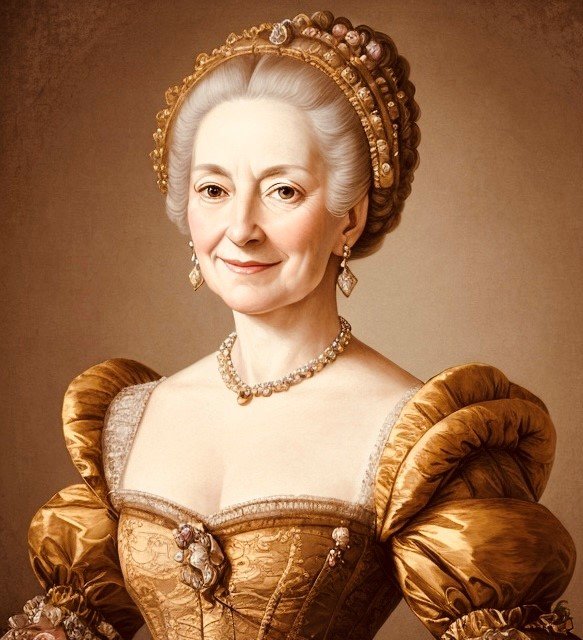
| 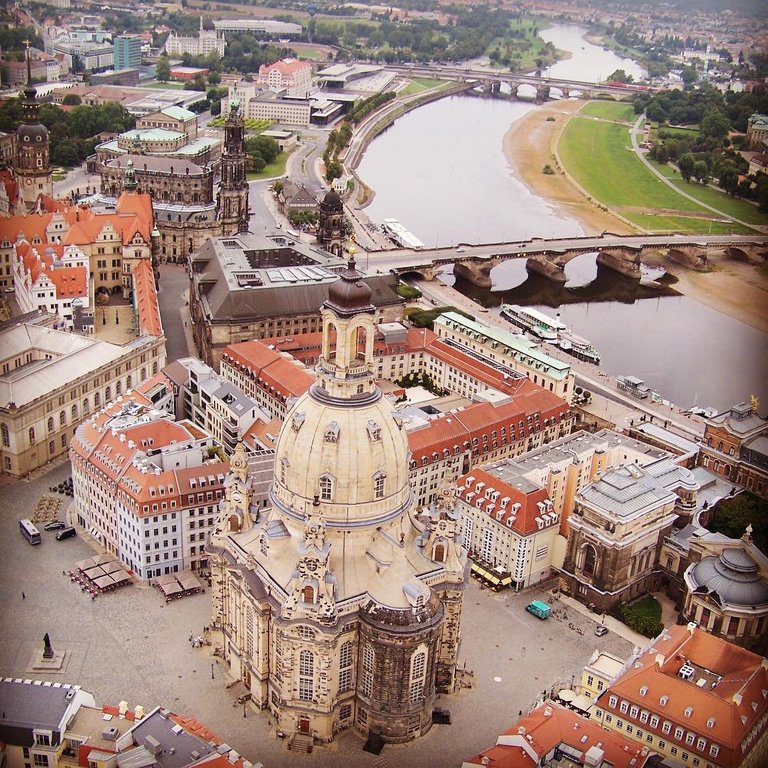 |
Congratulations, your post has been added to Pinmapple! 🎉🥳🍍
Did you know you have your own profile map?
And every post has their own map too!
Want to have your post on the map too?
Kriebstein Castle is indeed a remarkable testament to history and architecture.
it is also a nice place to visit and have a coffee ;-)
Sehr schön
!BBH
@city-of-dresden! Your Content Is Awesome so I just sent 1 $BBH (Bitcoin Backed Hive) to your account on behalf of @bitandi. (1/1)
Vielen Dank @bitandi :-)
Nice castle and history. Amazing that a treasure was found. It maked the history even more intriguing.
Schon sehr beeindruckend.
!LOL
!SLOTH
!BEER
Learn more about the SLOTHBUZZ Token at Sloth.Buzz and consider sharing your post there or using the #slothbuzz next time
(1/2)
lolztoken.com
No one, it happens Autumnatically.
Credit: reddit
@city-of-dresden, I sent you an $LOLZ on behalf of dotwin1981
(4/10)
ENTER @WIN.HIVE'S DAILY DRAW AND WIN HIVE!
View or trade
BEER.Hey @city-of-dresden, here is a little bit of
BEERfrom @dotwin1981 for you. Enjoy it!Learn how to earn FREE BEER each day by staking your
BEER.Hiya, @pinmapple here, just swinging by to let you know that this post made it into our Honorable Mentions in Travel Digest #2006.
Your post has been manually curated by the @pinmapple team. If you like what we're doing, please drop by to check out all the rest of today's great posts and consider supporting other authors like yourself and us so we can keep the project going!
Become part of our travel community:
Wow, this castle is very beautiful. thanks for sharing 😊
Thanks for your kind upvotes recently. Looks like a very interesting blog you've got! As soon as i find the time for it I want to read more about Dresden, so I got to follow you :-) !PIZZA
$PIZZA slices delivered:
@svanbo(1/5) tipped @city-of-dresden
Das ist eine traumhafte Ritterburg in malerischer Umgebung.
Glasklar ein Rehive von mir :-)
Please report abuse of downvotes and reward destruction by criminal acting stakeholders on the Hive Blockchain to the SEC.
SEC Contact:
Alternatively, the affected user can directly report the relevant accounts by name to the SEC in the United States of America.
Please use the following Contact Link to the SEC
United States Marshal Service Contact - USMS:
We also recommend reporting to the United States Marshal Service if you have been repeatedly harmed by misuse of stake power by account holders with significant market power. Accounts that use their stakepower to repeatedly and specifically harm users of the blockchain can also report the accounts in question anonymously to the United States Marshal Service.
Further information can be found at the following Contact Link of USMS Wanted
Please report to us via the above mentioned contact data, all cases of:
Schöne Ritterburg und interessante Geschichte !BEER
View or trade
BEER.Hey @city-of-dresden, here is a little bit of
BEERfrom @burn950 for you. Enjoy it!Do you want to win SOME BEER together with your friends and draw the
BEERKING.